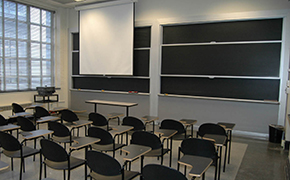Instructor Insights pages are part of the OCW Educator initiative, which seeks to enhance the value of OCW for educators.
Course Overview
This page focuses on the course 21L.315 Prizewinners: Nobelistas as it was taught by senior lecturer Wyn Kelley in Spring 2014.
This course, worth six instead of the typical twelve credits, drew attention to the thirteen female Nobel laureates, or Nobelistas, in Literature. We read novels or stories by five fiction writers—Gordimer, Morrison, Lessing, Müller, and Munro—with particular attention to narrative patterns in the texts, the socio-historical context of each writer, and critical reception of these works. Questions about how the Nobel Prize functions and is understood and about how Literature relates to the other Nobel subject areas—Peace, Chemistry, Physics, Medicine, Economic Sciences—featured in our discussions, too.
Course Outcomes
Course Goals for Students
- Read novels and stories by fiction writers that may be unfamiliar
- Attend to and find connections between the narrative patterns in the Nobel prize-winning texts
- Gain an understanding of the socio-historical contexts in which the authors wrote
- Discuss the critical reception of the featured works
There was a real sense of community in the class. They had such esprit de corps!
—Wyn Kelley
In the following pags, Wyn Kelley describes various aspects of how she taught 21L.315 Prizewinners: Nobelistas.
Curriculum Information
Prerequisites
None.
Requirements Satisfied
None.
Offered
Prizewinners is a Samplings course offered every spring and fall; each offering focuses on different authors.
Assessment
The students' grades were based on the following activities:
 30% Response papers (2 total)
30% Response papers (2 total) 10% In-class presentation
10% In-class presentation 30% Essay
30% Essay 30% Participation
30% ParticipationStudent Information

Breakdown by Year
Mostly undergraduates, with one or two graduate students.
Breakdown by Major
Students were from many different departments.
Typical Student Background
The class included both sophisticated literature students and students who hadn’t taken many literature classes before Prizewinners: Nobelistas. Several of the sophisticated students acted as leaders and encouraged others to participate.
The class typically includes students who speak English as a second language or who have not grown up in the United States. In Spring 2014, some students were from central European countries and could identify with the politics in Müller’s The Appointment. Some students identified as Latina/o and responded strongly to the stories about leaving one’s country, losing one’s identity, or speaking a different language. They noted that they took the class because it gave them an opportunity to connect with ideas that they weren’t able to talk about in their other classes.
Enrollment Cap
Enrollment is limited to 20-25 students so as to allow for interactive seminar discussions and one-on-one conferences between the instructor and students.
This half-semster course met for 7 weeks. During an average week, students were expected to spend 12 hours on the course, roughly divided as follows:
In Class
- Met 2 times per week for 1.5 hour per session; 13 sessions total; mandatory attendance
- Class discussion
- In-class presentation with a partner
Out of Class
- 1 one-on-one conference with instructor (roughly half way through the course)
- Complete readings
- Complete writing assignments
- Prepare in-class presentation
Semester Breakdown
| WEEK | M | T | W | Th | F |
|---|---|---|---|---|---|
| 1 |  |  |  |  |  |
| 2 |  |  |  |  |  |
| 3 |  |  |  |  |  |
| 4 |  |  |  |  |  |
| 5 |  |  |  |  |  |
| 6 |  |  |  |  |  |
| 7 |  |  |  |  |  |
| 8 |  |  |  |  |  |
| 9 |  |  |  |  |  |
| 10 |  |  |  |  |  |
| 11 |  |  |  |  |  |
| 12 |  |  |  |  |  |
| 13 |  |  |  |  |  |
| 14 |  |  |  |  |  |
| 15 |  |  |  |  |  |
| 16 |  |  |  |  |  |
 No classes throughout MIT
No classes throughout MIT Class meeting with student presentations
Class meeting with student presentations Response paper due date
Response paper due date No class session scheduled
No class session scheduled Office hours
Office hours Final essay due
Final essay due

 Room 1 of 1
Room 1 of 1 